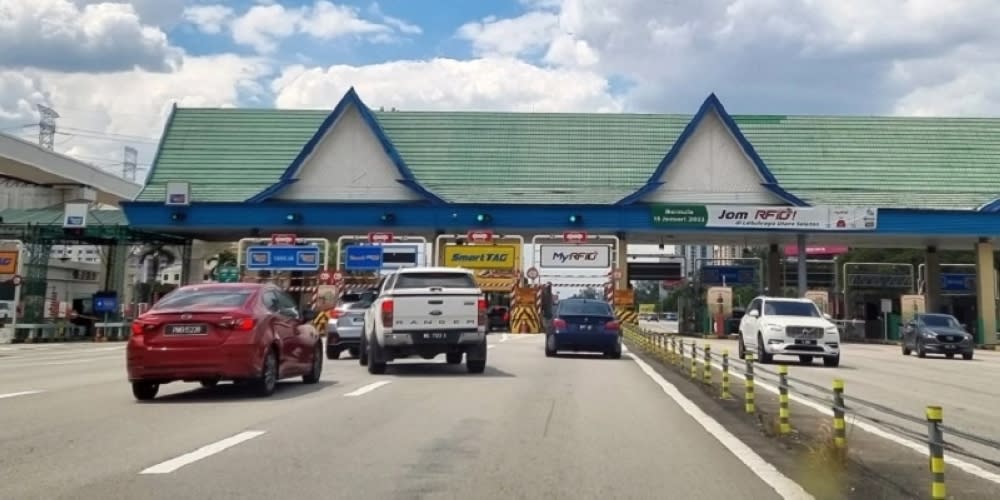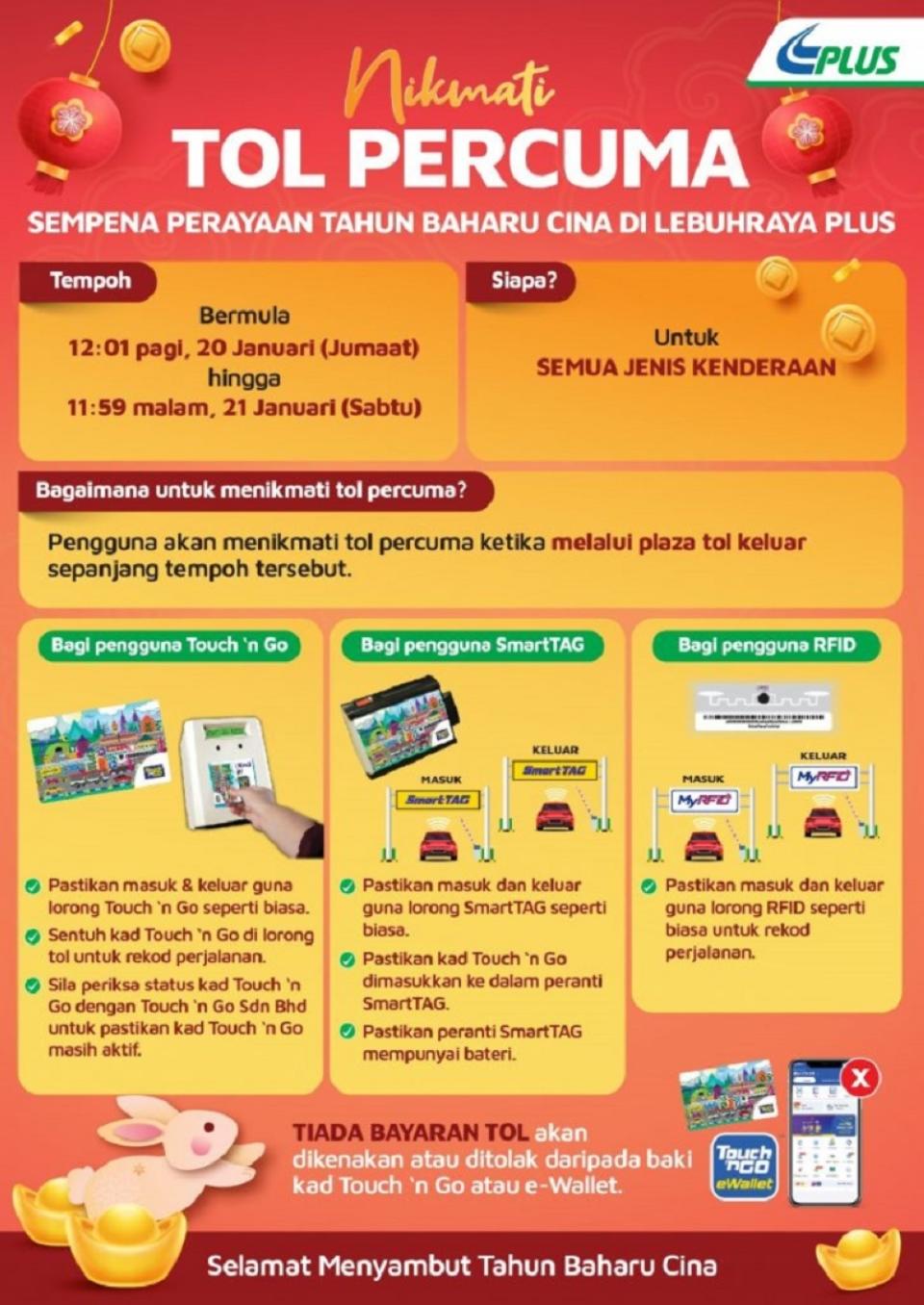Works Ministry considers removing boom barriers at RFID lanes during festive season, here’s why it can be a problem (VIDEO)

KUALA LUMPUR, April 6 ― To ease the flow of traffic, the Works Ministry is now considering removing the boom barriers at toll plazas temporarily, particularly for RFID lanes. If this is implemented, highway users will be able to experience Single Lane Free Fast Flow (SLFF) where vehicles can pass through the RFID lane without slowing down. While the idea is great, there are several things which the government needs to consider before the toll barriers are removed.
Yesterday, Senator Datuk Razali Idris suggested the removal of toll barriers during the upcoming Hari Raya season as vehicles slowing down at toll plazas are one of the main sources of congestion. The Senator said if a driver passes through the RFID lane, the vehicle is captured by the camera and there’s no need for barriers. He also urged the ban on heavy vehicles from interstate highways during the peak festive season to be continued.
In response, Deputy Works Minister Datuk Seri Abdul Rahman Mohamad thanked the Senator for his suggestion and said that was a very good idea. He said he will discuss the matter with the Malaysian Highway Authority (LLM) on the possibility of the implementation.
The Deputy Minister added that whenever a vehicle slows down through a toll plaza, the cameras will detect the vehicle and the boom barriers will open. He added that without the barriers, why not the (camera) method be used instead? Abdul Rahman said he couldn’t provide the exact answer right now but he believes it is possible through LLM.
How does RFID+ANPR work?
PLUS which operates the North-South Expressway has implemented Radio Frequency Identification (RFID) and Automated Number Plate Recognition (ANPR) for its toll plazas. The RFID tag remains the primary source of identification while the ANPR camera is only used as a secondary layer of verification. Contrary to what the Deputy Works Minister said, the boom barriers do not go up because the cameras could identify the vehicle. The boom barrier only opens after successful detection via RFID and there’s sufficient balance in the Touch ‘n Go eWallet.
This means if a vehicle plate is detected, the boom gate will not go up if the RFID is not detected or the linked eWallet has insufficient balance. There’s currently no mechanism at the moment to charge tolls based on number plate recognition alone as only Touch ‘n Go card, SmartTAG and TNG RFID are the accepted payment methods.
As highlighted by PLUS, the ANPR system is used to solve payment disputes to prevent users from being penalised with the maximum toll rate. The Toll Validation Centre will be able to track the actual entry and exit points of the vehicle so that the correct toll rate will be charged. The ANPR cameras are installed at all lanes for the entry points of the highway and only at RFID lanes on toll plaza exits.
With no legal framework to tackle toll evaders, who will compensate for leakages?
With the removal of barriers, the RFID lanes would essentially be the free-flow lane allowing anyone including non-RFID vehicles to pass through. This will definitely cause leakages for highway operators and there will definitely be toll evaders taking advantage of this.
As highlighted repeatedly, there’s currently no legal framework to effectively collect outstanding tolls from users which is something that has to be sorted before any toll barriers can be removed. In other countries with MLFF implementation, vehicle owners will be sent a bill for outstanding tolls and they can be hauled to court and slapped with heavier fines if the tolls are not paid after the grace period. In addition, there’s also a need for stronger enforcement of standardised number plates in order to make ANPR effective to track all vehicles.
With barriers removed, the biggest question is who will be responsible for leakages. Will the government compensate highway concessionaires for tolls that couldn’t be collected as a result of this move?
Most interstate travellers would be using the North-South Expressway during the festive season and it is estimated that 2 million vehicles use the highway daily during peak holiday seasons. Assuming the leakage rate is 5 per cent, that’s at least 100,000 vehicles that don’t pay tolls which is quite significant.
Is this possible during the toll-free programme?
With the Raya holiday season just around the corner, there are expectations that the government may announce another toll-free programme for major interstate highways which was recently offered during Chinese New Year. There’s no announcement yet for the coming holiday week. If you’re wondering leakages won’t be an issue if the tolls are free, the problem will surface once the toll-free period expires and the barriers are enabled. Removing barriers is easy but the biggest challenge is putting them back.
Most interstate highways are using the closed-toll system where the exact toll rate is calculated based on your entry and exit points. If a non-RFID vehicle enters the highway through the barrier-free RFID lane during the free period, that person will not be able to exit using the RFID lane once the barriers are restored when the toll-free period is over. If the driver wasn’t aware of the expiry time, the person might get stuck in the RFID lane causing more congestion during the last-minute rush to enjoy the free toll.
If the same vehicle tries to exit via SmartTAG or TNG card, the driver would have to pay a huge penalty fee as the two payment methods have no record of its entry into the highway. Of course, this won’t be an issue for open-toll system highways like KESAS, LDP, NPE and SPRINT where the tolls are collected on the spot regardless of where they came from.

In the past toll-free programmes, all highway users are reminded to tap in and tap out, and to exit using the same payment lane despite no tolls being collected. This is to allow proper tracking and to prevent any issues after the toll-free programme is over. For vehicles that couldn’t exit on time, it is suggested that vehicles exit at the nearest toll plaza and enter the highway again in order to enjoy a partial discount for the first part of the journey. ― SoyaCincau



